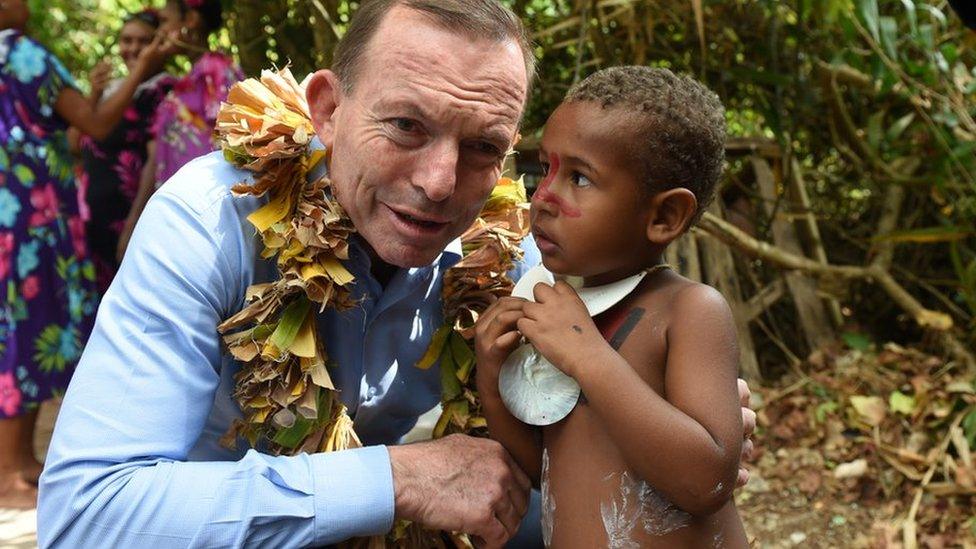Australia's return of Uluru to Indigenous owners marked 30 years on
- Published
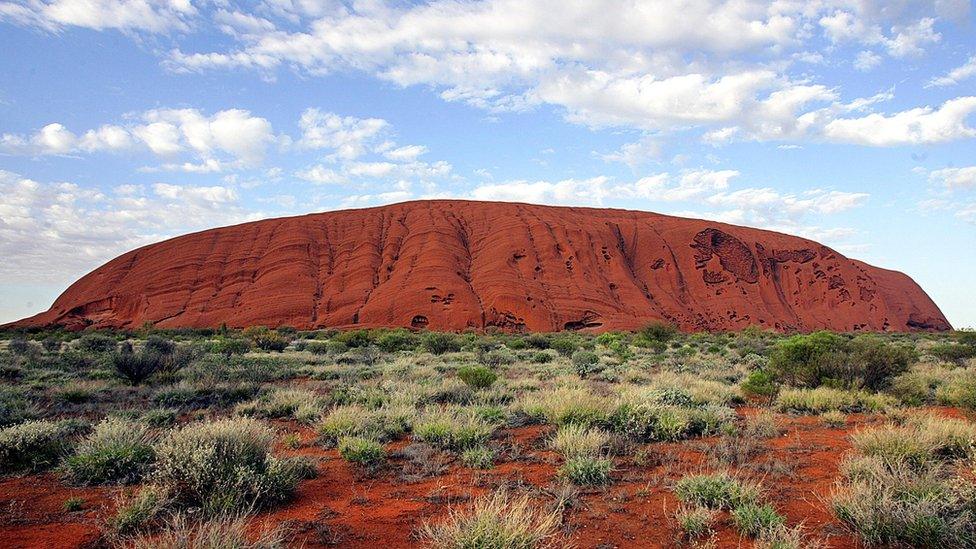
The Uluru-Kata Tjuta National Park was handed back to its traditional indigenous owners on October 26, 1985
The traditional indigenous owners of Uluru have marked 30 years since it was returned by the Australian government.
Hundreds of people gathered by the isolated hill, popularly known outside Australia as Ayers Rock, to commemorate a day described as "bittersweet".
On 26 October 1985, Governor-General Sir Ninian Stephen passed over the title deed to the Anangu people during a ceremony at the base of Uluru.
A 99-year lease was then signed for it to be jointly run with the government., external
But many believe that agreement did not bring the jobs and opportunities for the Anangu people that were expected.
"The rock looks the same, and tragically, so does [the community]," Minister for Indigenous Affairs Nigel Scullion said at events at the site on Sunday.
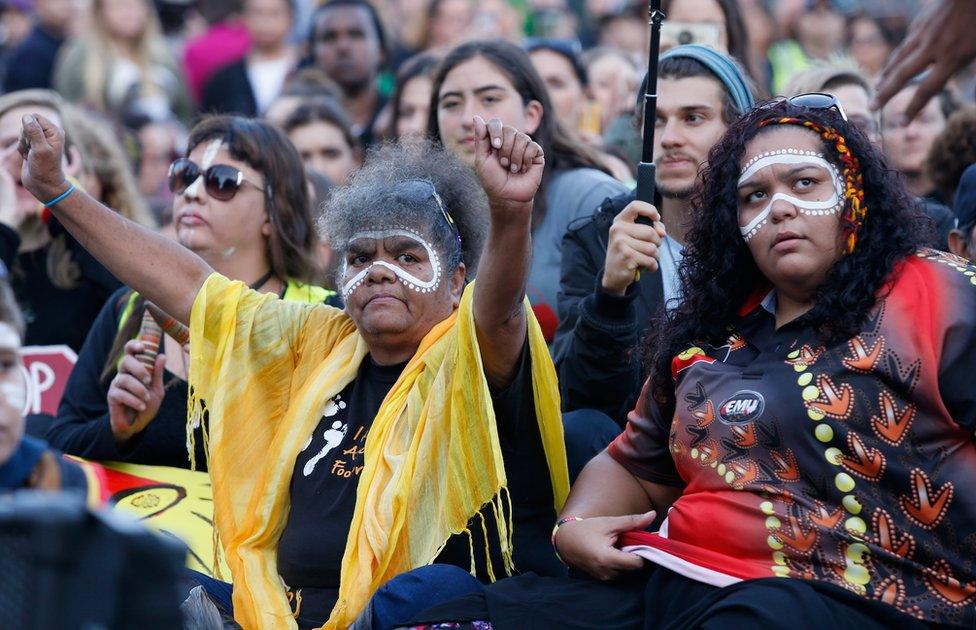
Earlier this year, demonstrators took part in a traditional smoking ceremony in Melbourne's CBD to protest government plans to close down remote indigenous communities in Western Australia. These remote communities house more than 12,000 aboriginal people.
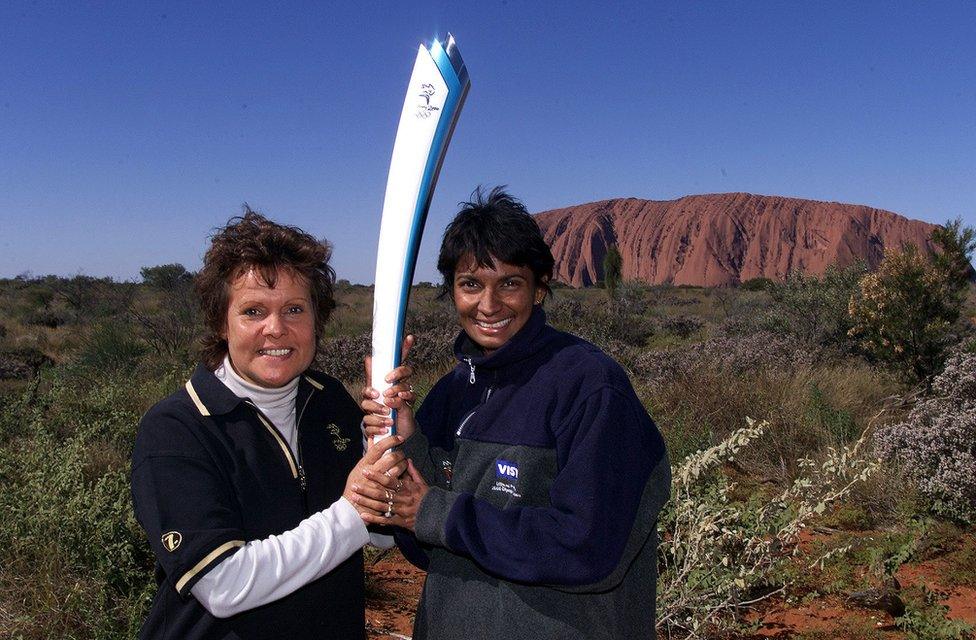
(right to left) Nova Peris and Evonne (Goolagong) Cawley hold the Olympic torch in 2000
On Monday, Australia's first female Indigenous MP Senator Nova Peris also spoke at Uluru, saying she would fight for the 400-strong Anangu community struggling to make a living in the shadow of a global tourism icon.
She listed the high-profile celebrities who have visited the site, from Oprah Winfrey to members of the British Royal Family.
"By this simple act of reconciliation you [Uluru] welcomed all these famous people, but not because 'reconciliation' is the politically correct thing to do, but because Anangu have always known that it's the right way to engage with visitors to your country," Ms Peris said.
She also called for constitutional recognition for indigenous peoples in the Australian constitution.
"You and I are not officially 'recognised' in the Australian Constitution as true and proper citizens within Australia, our ancestors fought the colonisers and the dingo hunters as they stole our land, and our children. We need to change this."
The government is proposing a referendum in 2017 on changing the constitution to recognise Aboriginal and Torres Strait Islander people as the first Australians.
- Published8 July 2015
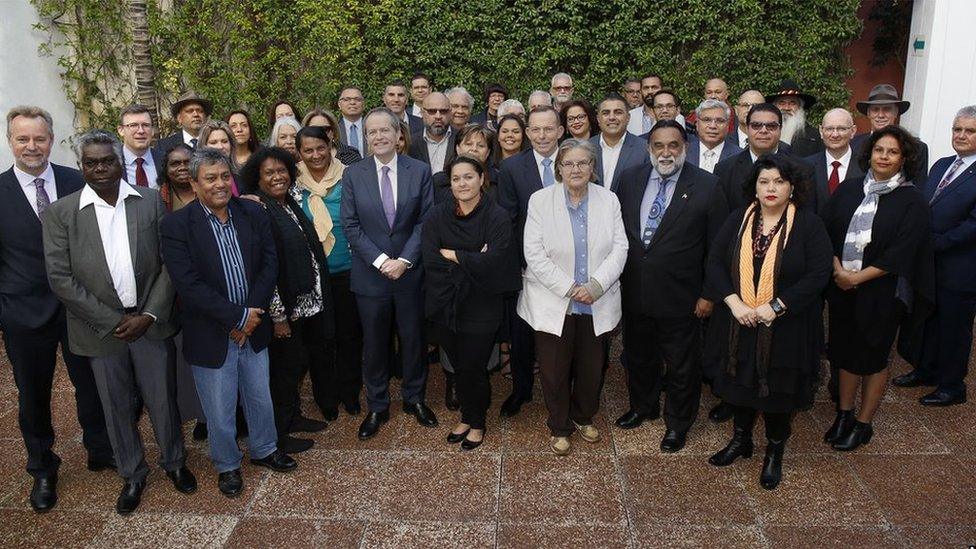
- Published3 August 2015
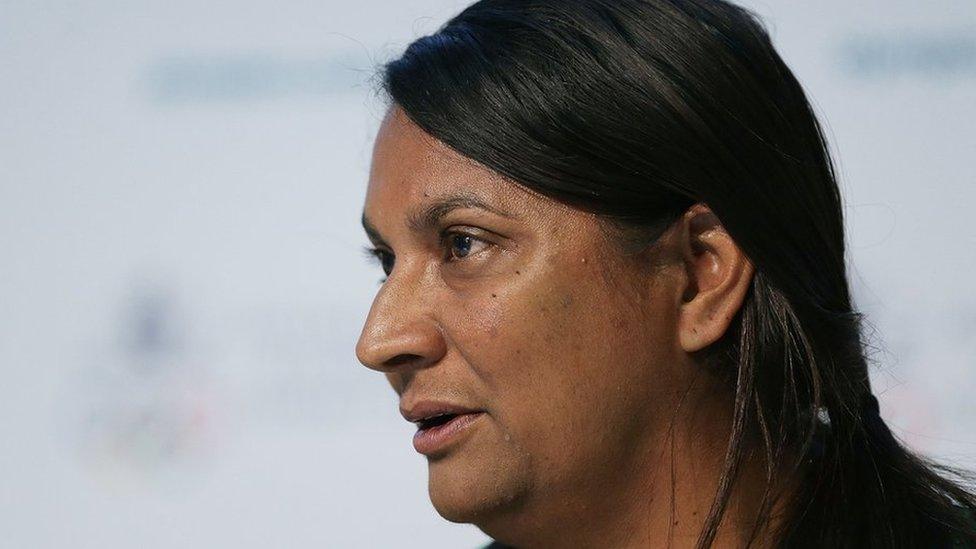
- Published24 August 2015
